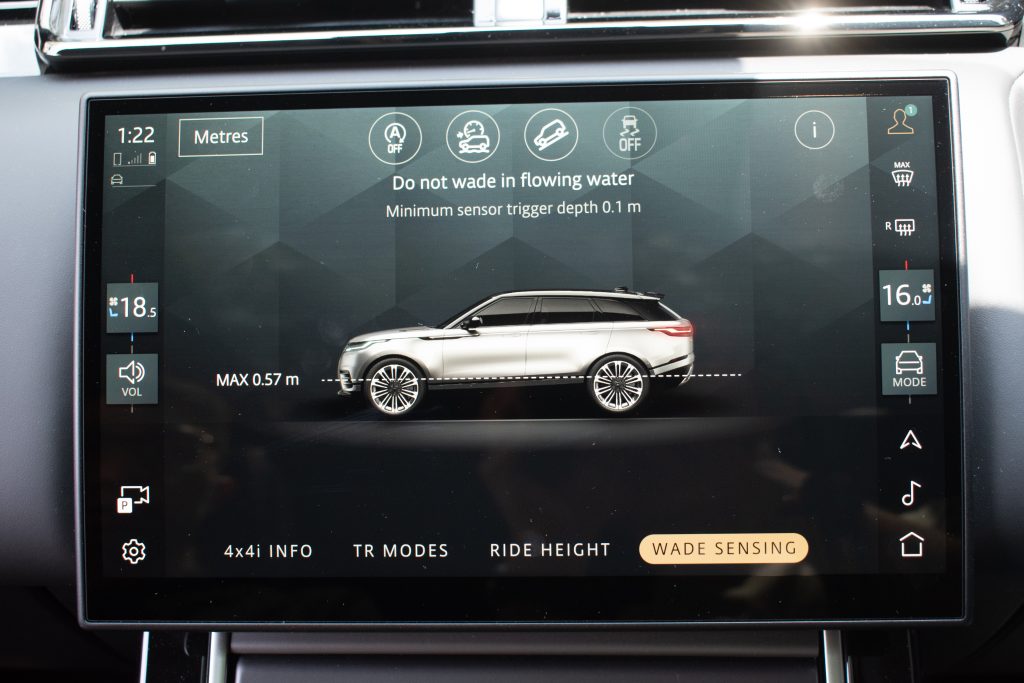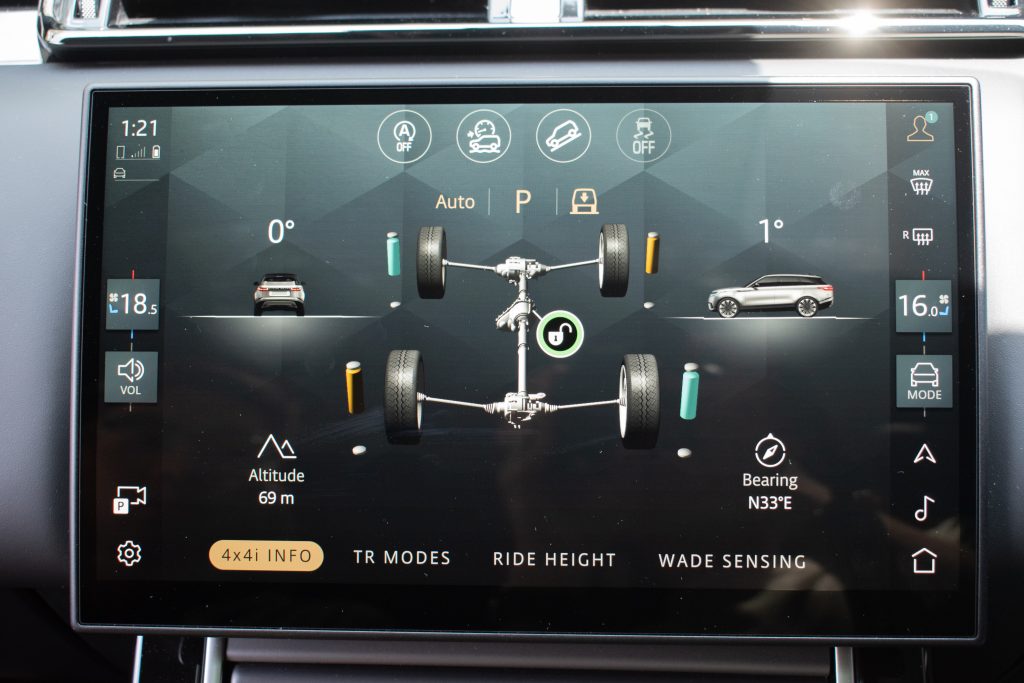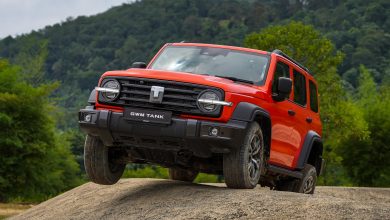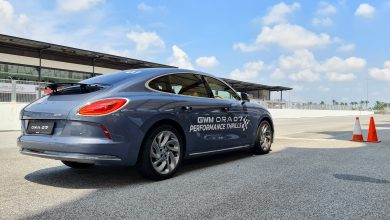Range Rover Velar HSE Facelift Review: Still Want That Cayenne?

Could the overall cool Britannia vibe offered by this Range Rover Velar win over Cayenne buyers?
For those in the market for a premium SUV over here, there is perhaps no choice more default now than the locally-assembled Porsche Cayenne. There is after all no other alternative in the market that offers that much grace, space and pace, at a price that not many buyers of these cars can refuse.
But what say to those who might prefer to stand out from the sea of Cayennes out there in the golf club car park? Well handily, the recently facelifted Range Rover Velar does make for quite the compelling(ly cool) alternative to the default German options.

Cool Britannia
And kicking off with the aforementioned cool factor first, the reason why the Velar is so could be partly attributed to the lettering on its hood, as the Range Rover name certainly still has more than a bit of cool cache to it after all. Though saying that, even if it did say Perodua up front, this SUV will still be deemed sub-zero simply from how sleek it looks.
With its long, extremely wide and, surprisingly for a Range Rover, rather low silhouette, the Velar already had all the right ingredients for a sexy looking SUV. A refreshed radiator grille and a similarly revised set of super-slim jewel-like Pixel Pro LED headlights brought on board with this facelift nevertheless keeps this (scarcely believable) 7-year old design bang up to date in 2024.
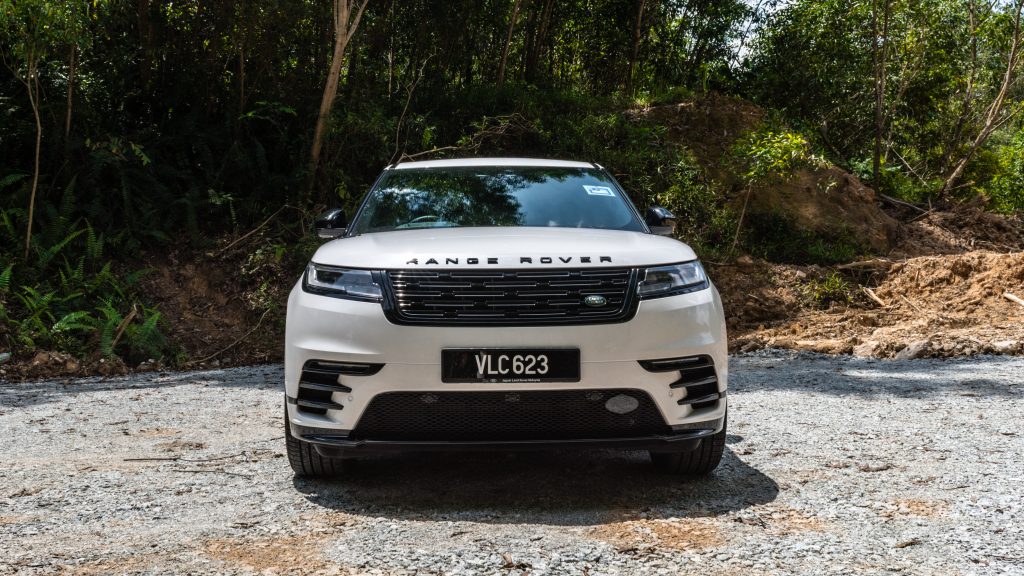
Nifty auto-retractable door handles and massive 22-inch 10-spoke diamond-turned alloys hiding red brake calipers (exclusive to this top-end HSE variant tested here) meanwhile furthers the cool Britannia vibe down the streamlined profile of this Velar, which is then to be neatly capped off by the shapeliest and sexiest of rumps that is featured on any SUV on the market today.

Because it was too good to not include here in discussing how cool this Velar looks, this white example tested here was rather aptly described by a friend as looking like a sleek futuristic spaceship relative to anything else on the road. And before the Tesla-ites chime in here as well, this particular British space ship actually looks cool, instead of the blobby thing that is called the Model Y.

The Chic-est Of Cabins
Moving on within now, the Velar’s interior aesthetic similarly follows on from clean and crisp vibe of its exterior. And thus should also go without saying that, much like the outside, this cabin look way cooler (in this author’s opinion at least) than any its Germanic rivals. With the difference in ambience between them almost akin to lounging about in a chic bar in London’s Soho for the Range Rover, while for its other continental counterparts feeling like sitting in a dingy black dungeon.

A large part of its chicness comes from the extremely minimalistic dashboard layout, with its straight yet flowy aesthetic only broken by two amazingly clear screens (which are incidentally a doddle to use and endlessly configurable by the way). Though while it does look incredibly nice, there might be a bit of style over substance at play here, as removal of the dedicated third climate screen in favour of an all-in-one central infotainment touchscreen with this facelift does make the simple act of changing the fan speed three more presses than it should be…

What more is that while not wanting to make any accusations on Land Rover build quality here, there was nevertheless the faintest rustling/whistling noise that occasionally emanated from the driver’s footwell of this test car. Handily however, this is to be all but drowned out by the absolutely amazing Meridian audio system, of which its 12 speakers not only provided excellent clarity to the point where listening to a podcast felt like one was in the room with the person speaking, but also more than enough bass to vibrate its sleek frameless rear view mirror.
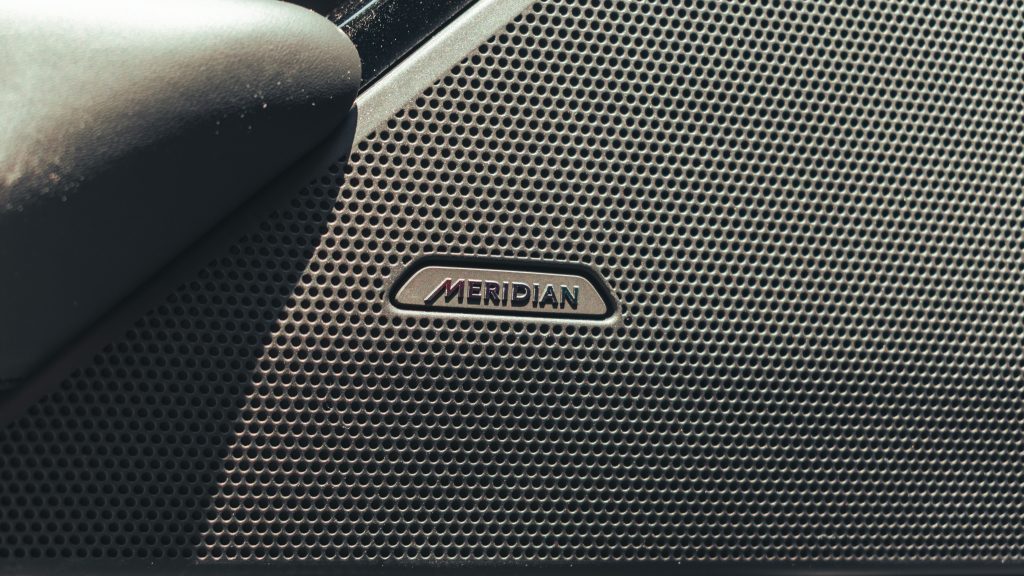
Cruisin’ In Comfort
Chicness and coolness is nevertheless not to be the only ‘c’ word that is used to describe the Velar, as this Range Rover also absolutely excels in providing cosseted and comfortable driving experience.
Now admittedly, this high degree of comfort it provides is in part to be built upon knowledge of the Range Rover having a reputation of being able to climb every mountain and ford every stream. This in turn sees even the most torrential of KL downpours not be even the slightest bit unnerving when cocooned in this Velar, safe in the knowledge that its excellent Terrain Response system and 650 mm wading depth will see in through anything rainy KL can throw at it.

Though of course, comfort in the Velar also comes about from its rather cushy massage-capable front seats, which are infinitely adjustable and feature pillow-like headrests, with the vertical positioning of which is adjusted electronically via the seat controls for extra premium-ness. The only slight pity is for this particular test car here to not have the rather cool wool upholstery option, but that could always be optioned through the endless customisation possibilities afforded by Land Rover (to those who could afford it that is).

In furthering the topic of comfort too, the Velar does actually also make a case for itself in this regard through a rather surprising aspect — its width. As AMC attempted to showcase with its ill-fated Pacer back in the mid-70s after all, the width of a car is what makes where comfort within it truly comes from. And with the Velar measuring in at just over 2 metres from wing mirror to wing mirror, this Range Rover just adds that little extra (typically undiscussed) dimension of comfort relative to its slimmer continental counterparts.
One particular nitpick however while discussing width is that while this wide velar has more than ample breadth within to easily fit three in its rear row of electrically reclining seats, some of those who have sat in the outer two seats during my time with it have noted for it to unfortunately not be the most comfortable. Such is primarily because of the wheel well position to be eating into their seat somewhat, which became a nuisance after longer journeys.

Another other interesting thing to note too when talking dimensions with the Velar here is for it to not really feel as high up as what one might come to expect from an SUV that bears the Range Rover badge. That said, it does still offer a decently commanding view out from all seats within the cabin.
Besides, this feeling of being in command when piloting the Velar is further emphasised from the fact that no one dares carve this car up anyway, with the common experience being for other cars to swerve back into their lanes when this car wafts along on the outside lane of any highway.

And waft is really the correct word when describing how this Velar cruises along, with it just silently smothering any bump it meets on the road along the way. What more is that while this does translate to a slightly wallowy ride at higher speeds, Land Rover must have learnt from its sibling brand Jaguar on how to do steering, as the Velar’s steering is weighty and direct enough for anyone to confidently helm this ship at any speed they dare goes.
All this wafting is unfortunately to be spoiled slightly if the adaptive cruise control is on, as the system on the Velar is probably most kindly described as being rather overeager, on both the brakes and the throttle in stop start traffic. This therefore results in a rather jerky ride that ended up being nauseous for some the occupants who had the misfortune to experience it.
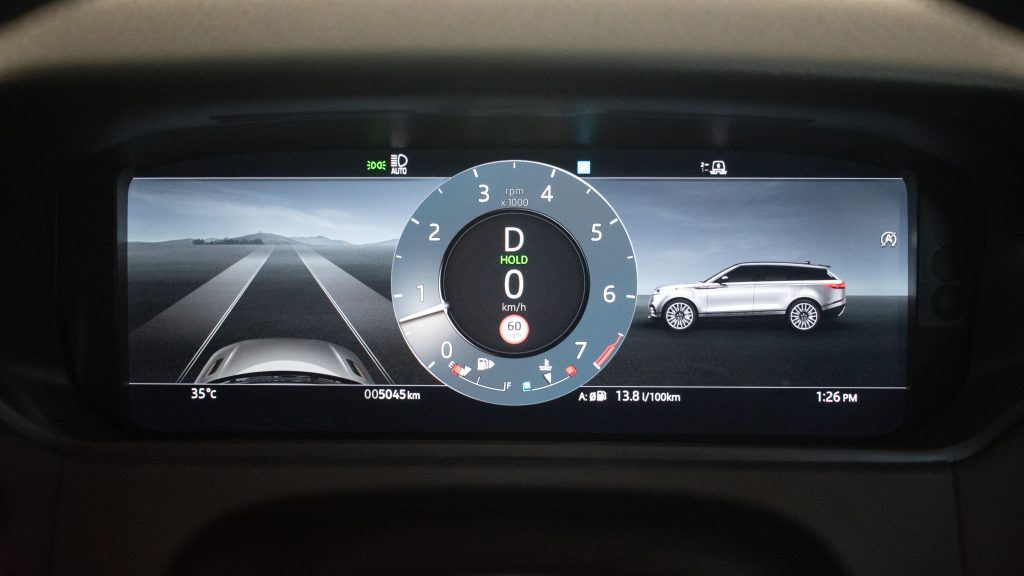
Similarly a tad too jerky as well is its 8-speed automatic, especially on hard acceleration. This point here is admittedly more of a nitpick that most drivers won’t notice, but it is nevertheless worth highlighting for its shifts to have almost that dual-clutch ferocity to it in spite of it being a smooth torque converter self-shifting transmission.

As for what sends power to the transmission meanwhile, the 2.0-litre turbocharged Ingenium four-cylinder might sound puny on paper for such a large car, but it does nevertheless have more than enough power on tap for the daily drive and the occasional hustle. On the subject too of said hustle, mat the throttle pedal and you’ll be greeted by a properly British growl of an engine note, with what interestingly sounds like a supercharger whine on occasion as well (even though it doesn’t have one).
Though just bear in mind that moving nearly 2-tonnes worth of Range Rover (at even the gentlest of paces) is no mean feat, especially for a 2.0-litre turbo four pot. So it shouldn’t come as too big a surprise for the Velar to chew through petrol like it is going out of fashion, with all 82 litre of it on board not lasting all that long if the 13.8 l/100 km (7.3 km/l) on-board fuel consumption readout is to be believed. Syukurlah Malaysia minyak masih murah…

Just reverting back to the topic of coolness for a bit here as well, this chic and sexy ambience exuded by the Velar is somewhat spoiled upon turning off the vehicle. This is as the whirring of its fans upon shut down to cool the engine are so loud that it sounds like a three cylinder absolutely red-lining it in the worst occasions, which in turn does hardly make for classiest of scenes to walk away from.
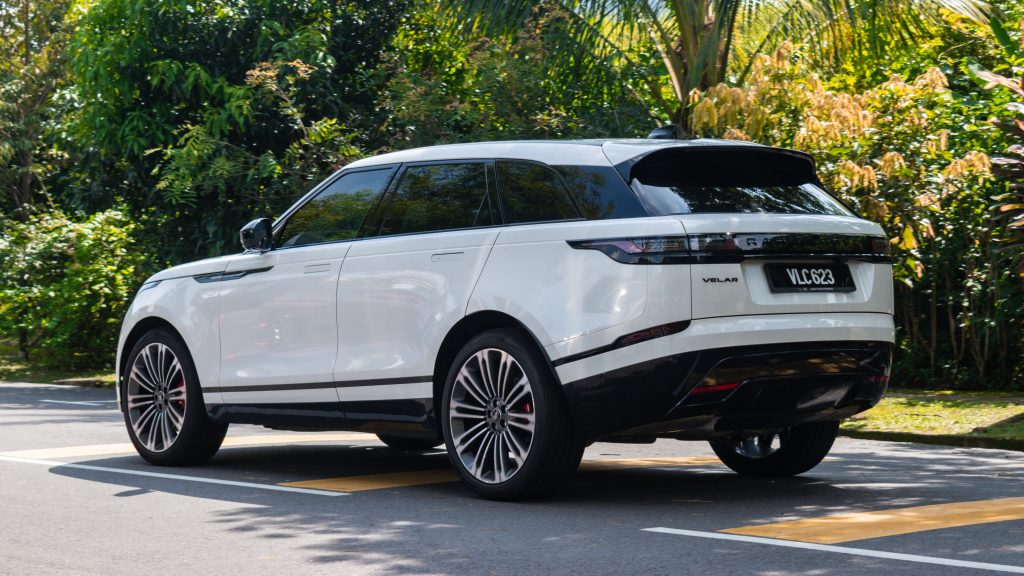
Still Want That Cayenne?
So, in touching again on the point made way above about the Velar being a tempting alternative to the Cayenne, the Porsche will admittedly cream the Range Rover in a game of top trumps. It is after all the faster (even in its base V6 form), and more importantly (in its locally-assembled guise) the cheaper option.
What more is as this piece perhaps already establishes, the Velar actually has more than a few niggles to it. Though as these past thousand-plus words have shown too, where there is still a bit of magic to this Range Rover — be it its icy cool factor or just how comfortable it is — that might just be persuasive enough to see those who can afford one splash the extra cash for one of these British behemoths, rather than any of its other less cool or comfortable counterparts.
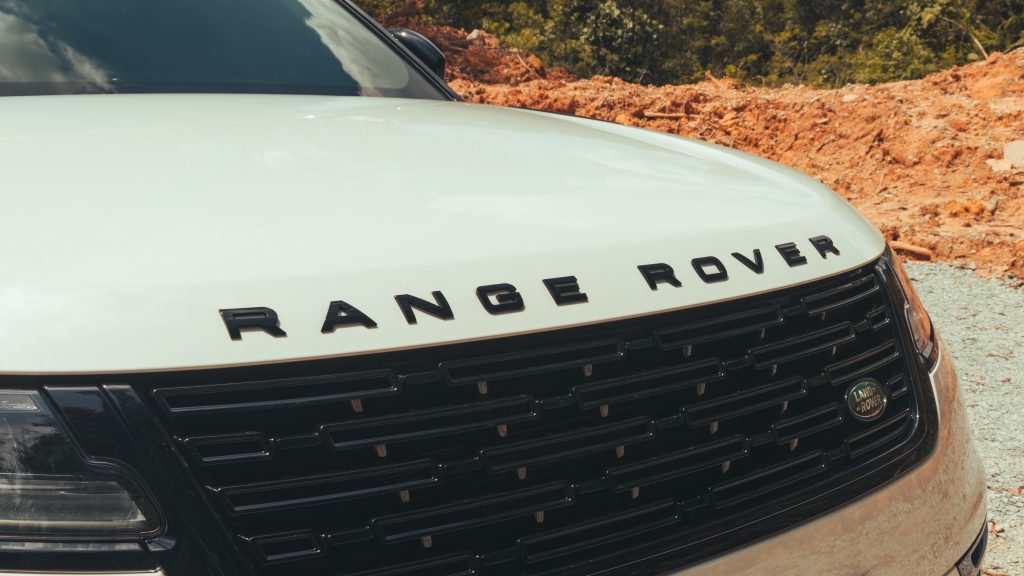
Odds & Ends
- Expectedly for a Land Rover product, the door covers all of the sill, which means no muddy trouser legs when exiting the Velar.
- For an SUV this size, the Velar’s boot is expectedly massive. Given its length and width, it can easily swallow one massive suitcase, with room for several duffle bags to spare. Though it is not to be the deepest of cargo areas, which may make carrying taller items a bit of a chore in one’s Range Rover.

- Dynamic I mode offers a stopwatch feature on the central infotainment touchscreen, which is likely a handy feature for the one mad person who will actually consider tracking their Velar.
- The Velar’s volume control on the steering wheel is a scroll wheel, which every car should adopt because it is just that easy to both fine tune and make large incremental changes the volume at an instant.
- One other cool and extremely handy touch on the steering wheel is the existence of a button with diamond-shaped icon, which serves the purpose of being customisable to basically any short cut through the settings menu. This therefore means that it can be configured for instance to a short tap bringing up the Android Auto menu screen, while a longer press activates the massaging function on the driver’s seat.

- The Velar features twin USB-C charging outlets in its rear quarters, but said ports (in the HSE at least with its four-zone climate control and rear digital air-con panel on the back of the centre console) are to intriguingly be found in the rear central backrest, which means they are only accessible with the rear armrest down.


- Like most modern cars, the Velar has an electronic parking. What makes it unique however is for three to not be a dedicated parking brake toggle, with the only way to activate the parking brake being to press the ‘P’ button.
- Rather handily for the forgetful Velar owners in Malaysia, the sunroof blind closes by itself upon locking the vehicle.
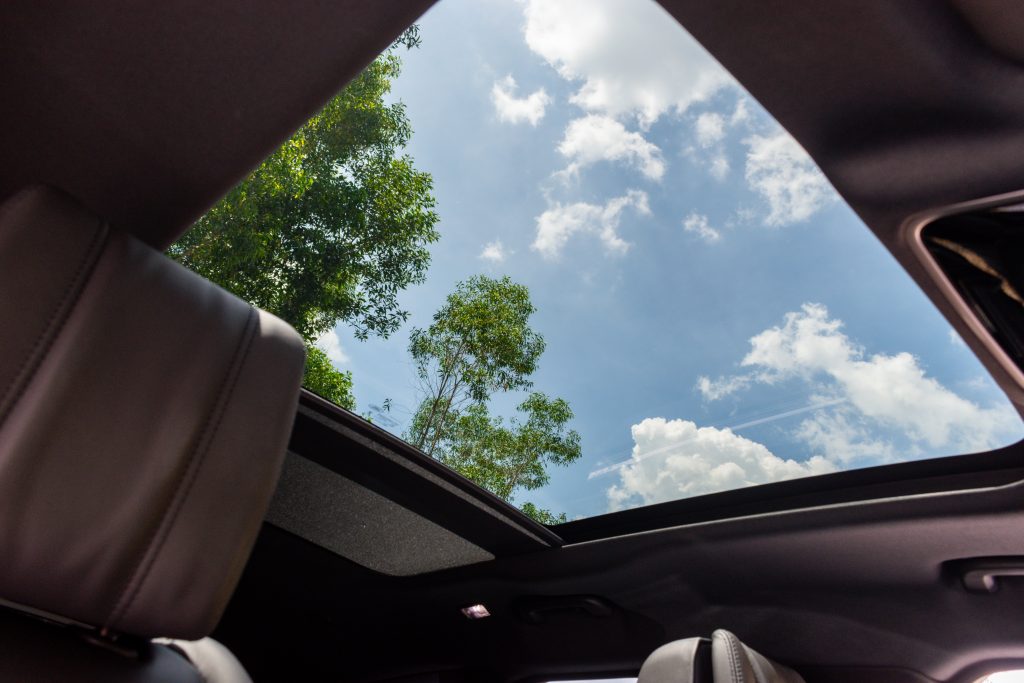
- Funnily enough for a Malaysian-spec car, the speed limit indicator on the display is in mph. Rather more intriguingly too though, the mph display somehow corresponds correctly to the speed limit in km/h.
Range Rover Velar P250 Dynamic HSE (L Spec) Technical Specifications
Engine: Ingenium Inline 4 Turbo
Capacity: 1,997 cc
Gearbox: 8-speed Conventional Automatic
Max Power: 250 hp @ 5,000 rpm
Max Torque: 365 Nm @ 1,300-4,500 rpm
Top Speed: 217 km/h
0-100 km/h: 7.5 seconds
Fuel Consumption: 9.2 – 9.9 l/100 km
Price: From RM 628,000 (This variant as tested starts from RM 739,800 before customisation)

